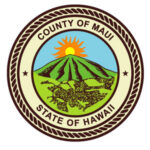
Nov 12, 2015 | Environment, Sustainability
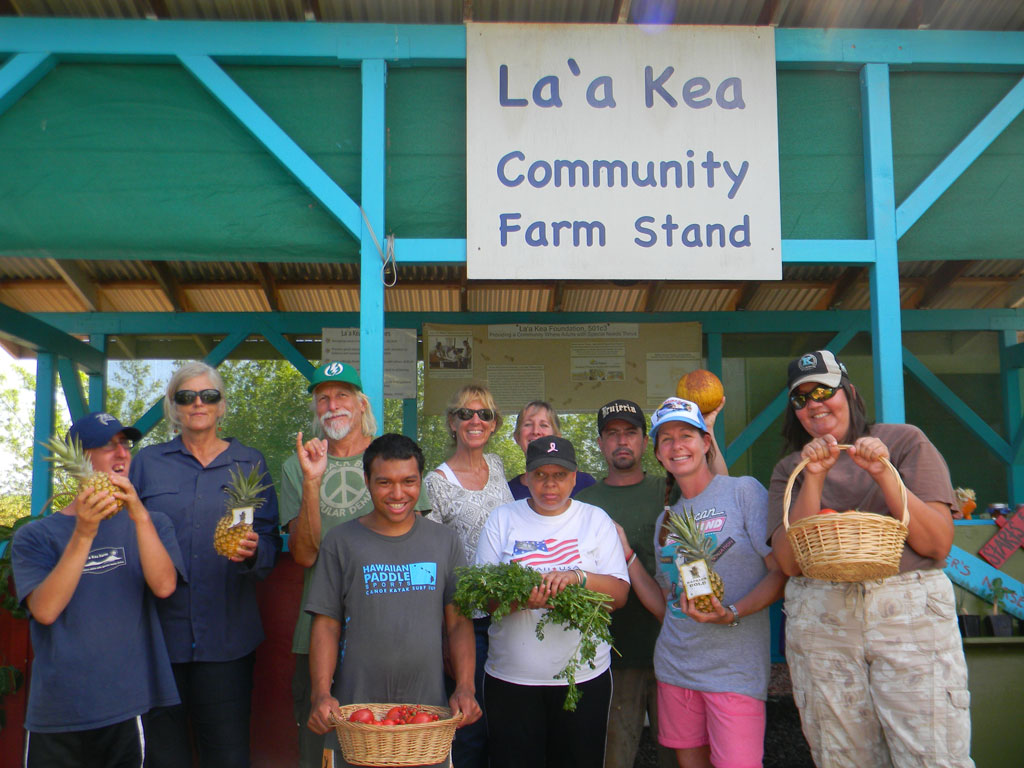 Imagine a place where the community reflects what is important and precious in each member. Imagine a place where the meaningful work that each individual contributes to the community is healing and inspirational. La‘a Kea Farm on Baldwin Avenue in Pa‘ia is that place. Sitting on 12 acres overlooking the ocean, with double rainbows and majestic white clouds, the farm inspires residents and visitors alike. Founded in June 2000, La‘a Kea, a 501(c)(3) nonprofit organization, provides day and residential programs for youth and adults with intellectual and developmental disabilities. It is the first of its kind in the State of Hawai‘i.
Imagine a place where the community reflects what is important and precious in each member. Imagine a place where the meaningful work that each individual contributes to the community is healing and inspirational. La‘a Kea Farm on Baldwin Avenue in Pa‘ia is that place. Sitting on 12 acres overlooking the ocean, with double rainbows and majestic white clouds, the farm inspires residents and visitors alike. Founded in June 2000, La‘a Kea, a 501(c)(3) nonprofit organization, provides day and residential programs for youth and adults with intellectual and developmental disabilities. It is the first of its kind in the State of Hawai‘i.
“Our mission is to create wholeness through education and therapy in extended family living,” said La‘a Kea Executive Director Andrea Hall Rodgers. “Being part of a thriving ‘ohana enables the members to fully unfold their potential and inspire each other. La‘a Kea’s programs include farming, economic ventures and the activities of daily living that come alive in a community with homes, farm buildings, a farmers’ market, cafe, craft studio and more,” said Rodgers. Inspired by the internationally known Camphill Village model, La‘a Kea offers a unique alternative to conventional care. Co-workers, residents and day program participants, regardless of their ability or disability, work in a supportive environment. They are all dedicated to discovering and enhancing the contribution of each individual through productive work.
In 2005, Rodgers presented the La‘a Kea project to Maui County Mayor Alan Arakawa. “It is an exceptional model of organic farming and equitable community living designed specifically for the special-needs community,” she told the mayor. Recognizing the critical need for a community serving one of our most overlooked populations, Mayor Arakawa arranged the first long-term lease ever given to a nonprofit in the history of Maui County.
“During my first administration we realized there was a gap of service when it came to assisting adults, over 18 years old, with physical and mental challenges,” said the mayor. “I am very happy we have programs like La‘a Kea and others that care for our most vulnerable island residents.”
La‘a Kea Farm is an exceptional model of organic farming and equitable community living designed specifically for the special-needs community.
Everyone is invited to the 5th annual La‘a Kea Farm Fall Family Festival and Pie Contest on Sunday, November 15th, 2015 from noon to 4 pm. The event includes food and fun for the entire family with live music, tractor rides, silent auction and more.
Andrea Hall Rodgers, La‘a Kea Executive Director
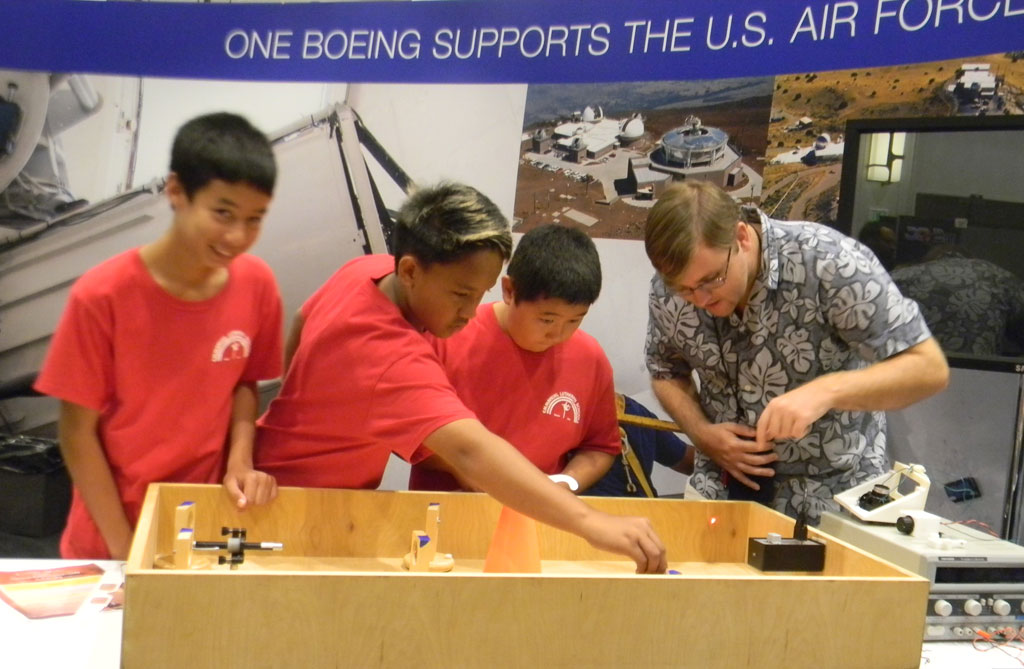
Oct 9, 2015 | Environment, Events
 The 16th annual Advanced Maui Optical and Space Surveillance Technologies Conference (AMOS) was held in September in the culturally rich setting of the Wailea Marriott Resort and Spa. Presented by Maui Economic Development Board and numerous sponsors, the four-day event is known as the top scientific conference in the field of optics and imaging for the surveillance of space. The conference brought together scientists from around the world to offer updates and assessments of current research in the fields of space situational awareness (SSA), space weather and related specialties in astronomy. SSA refers to knowledge of the space environment and the natural and man-made objects in orbit around the Earth.
The 16th annual Advanced Maui Optical and Space Surveillance Technologies Conference (AMOS) was held in September in the culturally rich setting of the Wailea Marriott Resort and Spa. Presented by Maui Economic Development Board and numerous sponsors, the four-day event is known as the top scientific conference in the field of optics and imaging for the surveillance of space. The conference brought together scientists from around the world to offer updates and assessments of current research in the fields of space situational awareness (SSA), space weather and related specialties in astronomy. SSA refers to knowledge of the space environment and the natural and man-made objects in orbit around the Earth.
The Boeing Company, AMOS’s main sponsor, recognizes the need for the future generation to get involved in all areas of space exploration and technological solutions. “Our Global Corporate Citizenship program, which originated on Maui in 2005, continues to contribute to community educational and environmental programs,” said Jerry Cornell, Boeing Site Executive. “AMOS provides a great opportunity for our Boeing experts to engage with Maui County students.”
The students, introduced to space technologies via exhibits and hands-on projects, had the opportunity to meet industry professionals and learn valuable lessons in science, technology, engineering and math subjects. “I learned so much at AMOS and the Boeing exhibits,” said Raider Howard, Lokelani Intermediate 8th grader. “Satellites continue to make a big impact on our community and in the world. We need new technology now and in the future for national security, internet, banking, telephones, television, navigation, scientific exploration and more.”
At Boeing’s simulated optics exhibits, students learned how light is transmitted from the collection points of the large 3.6-meter Haleakala summit telescope, via mirrors to an engineered optics table. Students were tasked to redirect light from a pen laser source, using up to five mirrors, onto moveable pucks, and finally to an optic sensor that buzzed when the laser light touched it. A 3D-printed fast-steering mirror was installed on the simulated optics table, making the laser light bounce off the steering mirror first. That mirror had separate controls, so student teamwork was required to complete the assigned task. “The experiments at AMOS were really interesting,” said Howard. “I might want to be an astronomer.”
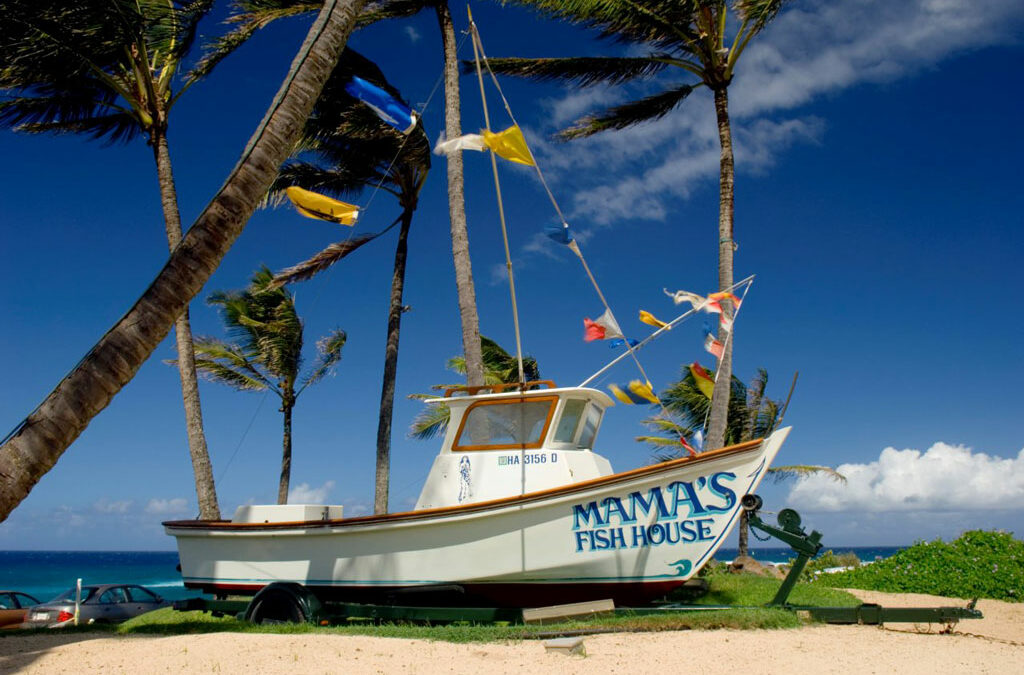
Sep 30, 2015 | Community, Environment, Sustainability
 Mama’s Fish House, family-owned by Floyd and “Mama” Doris Christenson, has been buying fish directly from Maui fisherman for over 40 years. These local fishermen, representing a way of life, culture and tradition in Hawai’i, consistently deliver the freshest and finest local Maui seafood. In May 2013, Mama’s Fish House, in cooperation with Maui fishermen and the Western Pacific Regional Fishery Management Council (Wespac), funded and deployed the first of two fishing buoys approximately 30 miles off the northeast shore of Maui. The buoys are technically called a Fish Aggregation Device (FAD) and are anchored to the seafloor at a depth of over 1500 ft. “They are located in deep, off-shore waters that are habitat for pelagic species such as tuna, mahi-mahi, ono, and billfish,” said Mama’s Fish House Marketing Director Karen Christenson. “The concept of a FAD is a small platform or skiff that is anchored to the ocean floor, with a GPS beacon for tracking,” Christenson explained. “The floating buoy attracts the fish, offering some protection for smaller fish that, in turn, attract larger predator fish.”
Mama’s Fish House, family-owned by Floyd and “Mama” Doris Christenson, has been buying fish directly from Maui fisherman for over 40 years. These local fishermen, representing a way of life, culture and tradition in Hawai’i, consistently deliver the freshest and finest local Maui seafood. In May 2013, Mama’s Fish House, in cooperation with Maui fishermen and the Western Pacific Regional Fishery Management Council (Wespac), funded and deployed the first of two fishing buoys approximately 30 miles off the northeast shore of Maui. The buoys are technically called a Fish Aggregation Device (FAD) and are anchored to the seafloor at a depth of over 1500 ft. “They are located in deep, off-shore waters that are habitat for pelagic species such as tuna, mahi-mahi, ono, and billfish,” said Mama’s Fish House Marketing Director Karen Christenson. “The concept of a FAD is a small platform or skiff that is anchored to the ocean floor, with a GPS beacon for tracking,” Christenson explained. “The floating buoy attracts the fish, offering some protection for smaller fish that, in turn, attract larger predator fish.”
“FADs have proven to be a successful sustainable food source while reducing transit times and fuel costs for fishermen,” said Mama’s Fish House Executive Chef Perry Bateman. While the State of Hawaii maintains a network of FADs across the islands with the objective of providing recreational fishing opportunities, Mama’s FAD is different. “It is the first buoy funded by a private business to support the fishermen and Wespac’s research,” Chef Perry said.
Recognizing that data collection is critical to ensuring sustainability for local Hawai’i fish stocks, Mama’s Fish House encourages fishermen to submit their catch reports to the State of Hawai’i and Wespac. “Having accurate reports is being pono, doing the right thing, and perpetuating our culture of fishing,” said Chef Perry. He added that all Hawai’i-licensed fishermen can fish at Mama’s Fish House funded buoys and sell their catch to anyone. “The goals of community FAD projects are to increase fishing opportunities and cooperative research, and to provide community benefits.”
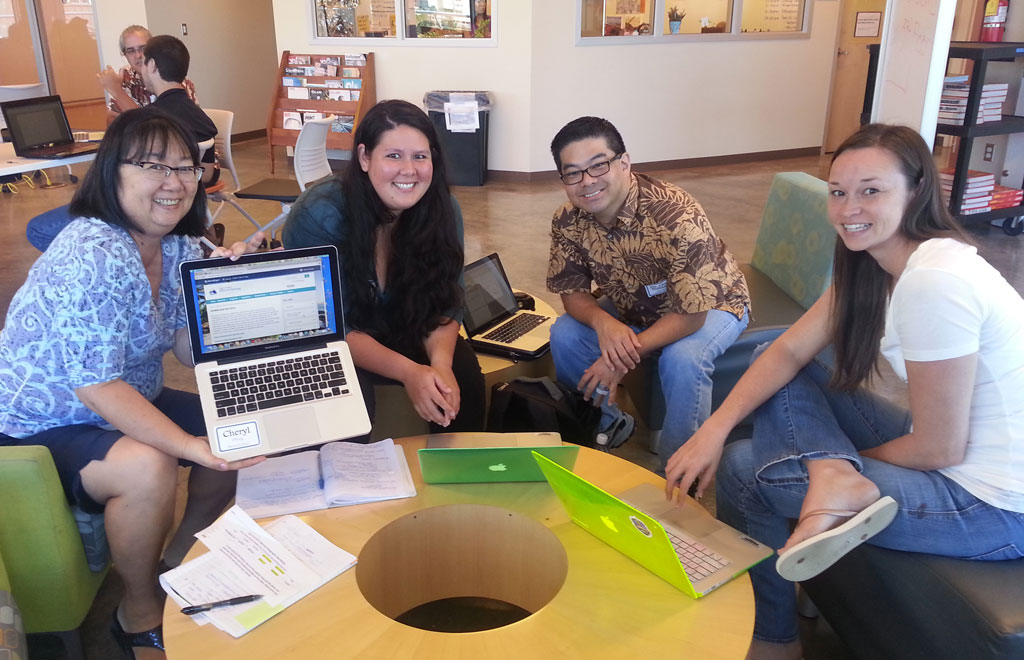
Jul 1, 2015 | Environment
 The recent National Geographic Workshop in Honolulu provided approximately 50 teachers from across the state with a deeper understanding of geography concepts and skills. The National Geographic Society funded the workshop in partnership with Maui Economic Development Board. “In this workshop, the teachers learned that geography is an essential element in the social studies curriculum,” said Robert Sternthall, Lahainaluna High School Social Studies Department. The first speaker, Dr. Hong Jiang, Chair of Geography at UH Manoa, enlightened the educators with case studies on change in Waikiki and the geography of tea as examples of interesting stories that convey geographic concepts. “Daniel Lin of the Pacific Voyaging Society shared how to track the canoes from their website and how to contact the crew,” said Sternthall, noting that a statewide emphasis has been placed on this voyage as a way to teach students in an integrated manner.
The recent National Geographic Workshop in Honolulu provided approximately 50 teachers from across the state with a deeper understanding of geography concepts and skills. The National Geographic Society funded the workshop in partnership with Maui Economic Development Board. “In this workshop, the teachers learned that geography is an essential element in the social studies curriculum,” said Robert Sternthall, Lahainaluna High School Social Studies Department. The first speaker, Dr. Hong Jiang, Chair of Geography at UH Manoa, enlightened the educators with case studies on change in Waikiki and the geography of tea as examples of interesting stories that convey geographic concepts. “Daniel Lin of the Pacific Voyaging Society shared how to track the canoes from their website and how to contact the crew,” said Sternthall, noting that a statewide emphasis has been placed on this voyage as a way to teach students in an integrated manner.
The group was introduced to C3 Framework, a new initiative designed to enhance the social studies curriculum. “It is based on inquiry, using compelling and supporting questions to enhance student engagement and learning,” Sternthall said. MEDB’s K-12 Project Director for Women in Technology, Isla Young, introduced teachers to the exciting world of geospatial technology. Sternthall explained, “She showed us how to avail ourselves of geographic information systems, data and mapping software from ESRI and ARCGIS. This is exciting because now we have access to this technology for our students to broaden their geographic skills in the classroom.”
Brenda Barr of the National Geographic Alliance for Educators instructed the group in the first phase of training to become certified National Geographic educators. “We hope this will strengthen the teaching of geography in Hawai’i,” said Sternthall. On the last day of the workshop the participants spent most of the day working on lessons using the C3 Framework. “We worked in groups according to the content that we are teaching,” Sternthall said. “It was a very productive workshop,” he added. “Not only did we learn new information, but we also brought home many ideas that we can use with our students.”
May 27, 2015 | Environment
 A team of Molokai High School girls sought a solution to eradicating “the largest current threat” to Hawaii’s reefs and earned fourth-place in biochemistry at the 2015 INTEL International Science and Engineering Fair in Pittsburgh, PA. The win on an international stage for 16-year-olds Kea’a Davis, Alexandria Simon and Amber “Momi” Afelin was impressive.
A team of Molokai High School girls sought a solution to eradicating “the largest current threat” to Hawaii’s reefs and earned fourth-place in biochemistry at the 2015 INTEL International Science and Engineering Fair in Pittsburgh, PA. The win on an international stage for 16-year-olds Kea’a Davis, Alexandria Simon and Amber “Momi” Afelin was impressive.
“Science has never been my favorite subject,” Davis acknowledged. “It was always something that’s been hard for me to stay interested in.” But that has since changed and Davis said she’s now seriously considering a science-related career. Afelin, the group leader and a junior who’s graduating a year earlier than her classmates, said she learned the value of determination. “You had to be incredibly self-motivated and dedicated in order to pursue this. For us, science was about solving a problem and we worked really hard to find a solution,” Afelin said. Simon said each of the girls had specific tasks yet all of them supported each other whenever needed. “We became each other’s closest friends, consultants and partners.”
Their project, “Investigating Agar Extraction as a Method of Gracilaria Salicornia Eradication,” attempted to find a solution to eradicate the invasive seaweed also known as “Gorilla Ogo” on Hawaii’s coral reefs. Together they developed a process to extract parts of the seaweed that could be sold as agar, a substance similar to gelatin. Remaining plant material not used in the agar could serve as fertilizer, according to the team’s research. “Essentially we’ve taken a very negative aspect of our reef life,” Afelin said, “and turned it into a product that can be sold in stable markets, creating an economic incentive to fund the seaweed’s own eradication efforts with money left over to pay for manpower.” The three girls were able to conduct their research and experiments with the help of former teacher Scott Hemenway. Financial backing for the girls to travel to the international competition was supported in part through MEDB’s Women in Technology grants from the Office of Naval Research and the County of Maui.

Apr 8, 2015 | Community, Environment, Sustainability
 More than 30 percent of Maui’s energy needs, on average, are being met by renewable energy sources such as wind and rooftop photovoltaic (PV) systems, and the trend continues to rise, making Maui a national and global leader in the adoption of renewable energy. This was just one of the positive observations to emerge from the 2015 Maui Energy Conference + Exhibition that spanned two days at the Maui Arts & Cultural Center last month. More than 300 energy industry leaders from Hawaii, the Mainland and Japan attended and shared ideas on how to better serve customers in today’s rapidly changing power generation and delivery environment.
More than 30 percent of Maui’s energy needs, on average, are being met by renewable energy sources such as wind and rooftop photovoltaic (PV) systems, and the trend continues to rise, making Maui a national and global leader in the adoption of renewable energy. This was just one of the positive observations to emerge from the 2015 Maui Energy Conference + Exhibition that spanned two days at the Maui Arts & Cultural Center last month. More than 300 energy industry leaders from Hawaii, the Mainland and Japan attended and shared ideas on how to better serve customers in today’s rapidly changing power generation and delivery environment.
At the conference, Program Committee member Holly Benz of Schneider Corporation said: “All eyes are on Hawaii.” Benz said outsiders are continuing to closely watch the state and its work on energy issues. “There is a tremendous opportunity for Hawaii to lead, to test and to learn.” Keynote speakers Alan Oshiro, President of Hawaiian Electric Company and Eric Gleason, President of NextEra Energy Hawaii shared perspectives on the acquisition of Maui Electric’s parent company, HEI by NextEra and outlined the benefits that it can bring to customers and Hawaii. NextEra, the largest generator of wind and solar energy in North America, has announced its commitment to lower Hawaii’s high electricity costs.
One of the nine thought-provoking panels, “Focus on the Customer—Maui Style,” discussed proposed changes in Maui’s energy landscape, concluding that these must be transparent to residents and engaging for young people. “In my business,” Cathy Nobriga Kim, vice president of Maui Soda and Ice Works said, “energy is crucial.” When asked how businesses could be involved in renewable energy solutions for Maui, Kim observed that business involvement in pilot projects to develop renewable energy solutions are beneficial. Other panelists said that government and community leaders must step up to explain the changing energy landscape. Information provided to residents must be true and trustworthy; “There needs to be transparency,” one panelist said. The conference was hosted by the Maui Economic Development Board and the Mayor’s Office of Economic Development.
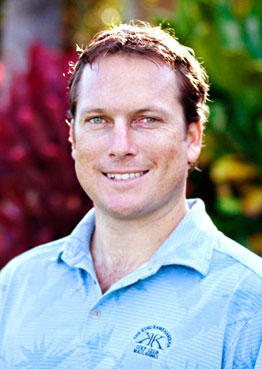
Mar 18, 2015 | Environment, Small Business, Sustainability
A passion for the o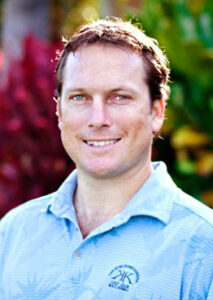 utdoors inspired John Bendon to create a company that helps others achieve milestones in energy efficiency and environmental design. Bendon, a 1996 Seabury Hall graduate, serves as the founding principal of Green Building Hawaii. “Ultimately, the core focus of what we do is drive value by maximizing performance,” Bendon said.
utdoors inspired John Bendon to create a company that helps others achieve milestones in energy efficiency and environmental design. Bendon, a 1996 Seabury Hall graduate, serves as the founding principal of Green Building Hawaii. “Ultimately, the core focus of what we do is drive value by maximizing performance,” Bendon said.
Founded in 2007, Green Building Hawaii assists commercial and residential clients and conducts training in a number of areas including energy audits, photovoltaic analyses and high performance certifications such as LEED – Leadership in Energy and Environmental Design. With Green Building Hawaii’s guidance, the Hyatt Regency Maui Resort and Spa became the first resort in the state and only the fourth in the world, according to Bendon, to earn a silver level certification under the U.S. Green Building Council’s LEED for Existing Buildings Operations and Maintenance (EBOM). It is also the first building to Maui County to receive this designation. “What’s exciting is that a lot of resorts want to follow Hyatt’s lead,” said Bendon, who’s added more resorts to his clientele list.
Maui Economic Development Board, another Green Building Hawaii client, became the first LEED EBOM certified office building on Maui. “The LEED rating system is the most recognized third party certification for environmentally conscious buildings,” Bendon explained. “I hope more organizations will follow MEDB’s commitment toward promoting renewable clean energy.” Bendon said his team worked with staff at MEDB and at the Hyatt Regency Maui for about a year and a half, reviewing policies and procedures relating to issues such as energy efficiency, waste diversion, green cleaning, and other sustainable operating policies and procedures. “The energy projects are return on investment projects. We help companies both improve the bottom line and the environment,” Bendon said.
Green Building Hawaii has seen an upswing in business. “We’re really busy these days. The awareness is growing in this field and we are starting to work with organizations that did not have these types of issues on their radar even a few years ago.” Bendon said. On his company Web site, Bendon predicts that the next big advances in green building will involve material life cycle assessments and further integration of smart home/building technologies to reduce energy use.
Mar 11, 2015 | Environment, Events, Sustainability
 Experts from across the nation will present the latest trends in the electric utility industry, as well as the public policy influencing customer choices. Sessions will address issues about advancing toward grid modernization, consumer protection, and engaging customers in a fresh, new way.
Experts from across the nation will present the latest trends in the electric utility industry, as well as the public policy influencing customer choices. Sessions will address issues about advancing toward grid modernization, consumer protection, and engaging customers in a fresh, new way.
Conference sessions include
- Understanding the evolving role of the customer in a broader context
- The customer of the 21st century
- Are we seeing what they’re seeing: customer perceptions on energy
- Advancing toward grid modernization – meeting customer needs
- The growth of distribution generation – good or bad for the customer?
- Community perspectives (video panel discussion)
- How can the customer become an active participant in the energy landscape
- The changing regulatory compact – the customer, the utility, the regulator
- Consumer protection – who’s looking out for the customer?
Keynote speakers include
- Eric Gleason, President, NextEra Energy Transmission, LLC
- Deborah Kimberly, Vice President, Customer Energy Solutions, Austin Energy
- Constance Lau, Chairman and Chief Executive Officer, Hawaiian Electric Industries, Inc.
- Alan Oshima, President and Chief Executive Officer, Hawaiian Electric Company
- Luis Salaveria, Director, Department of Business, Economic Development and Tourism, State of Hawaii
- Mark Toney, Executive Director, The Utility Reform Network (TURN)
For details on how to register and more information about the conference, visit MauiEnergyConference.com
Presented by the Mayor’s Office of Economic Development and the Maui Economic Development Board.
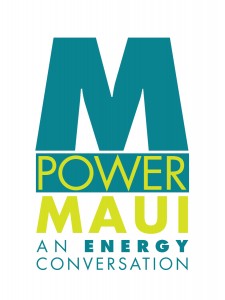
Feb 18, 2015 | Environment, Sustainability
Only 11 days remaining!
 Share your priorities and values about energy on Maui – today and in the future – as part of a project called “MPowerMaui: An Energy Conversation”.
Share your priorities and values about energy on Maui – today and in the future – as part of a project called “MPowerMaui: An Energy Conversation”.
Sign up and participate in small group sessions during the month of February. These 90-minute sessions are designed to be engaging, interesting, and informative.
You will learn more about energy, think about your own actions related to energy, prioritize issues, consider what actions you would or would not support, and develop messages for decision makers. The results of these MPowerMaui conversations will be presented at the “Maui Energy Conference” to be held on March 25-26, 2015 and shared with decision makers.
We invite you to either host a session at your home, company or organization by bringing together 12-16 individuals and a MEDB representative will run the session … or sign up for a session that MEDB organizes.
For more information and to sign up to participate, please call 875-2336.
The MPowerMaui project is presented by the Maui Economic Development Board with sponsorship from the County of Maui Mayor’s Office of Economic Development; State Department of Business, Economic Development & Tourism (DBEDT) Energy Office; and the UH Hawaii Natural Energy Institute (HNEI).

 Imagine a place where the community reflects what is important and precious in each member. Imagine a place where the meaningful work that each individual contributes to the community is healing and inspirational. La‘a Kea Farm on Baldwin Avenue in Pa‘ia is that place. Sitting on 12 acres overlooking the ocean, with double rainbows and majestic white clouds, the farm inspires residents and visitors alike. Founded in June 2000, La‘a Kea, a 501(c)(3) nonprofit organization, provides day and residential programs for youth and adults with intellectual and developmental disabilities. It is the first of its kind in the State of Hawai‘i.
Imagine a place where the community reflects what is important and precious in each member. Imagine a place where the meaningful work that each individual contributes to the community is healing and inspirational. La‘a Kea Farm on Baldwin Avenue in Pa‘ia is that place. Sitting on 12 acres overlooking the ocean, with double rainbows and majestic white clouds, the farm inspires residents and visitors alike. Founded in June 2000, La‘a Kea, a 501(c)(3) nonprofit organization, provides day and residential programs for youth and adults with intellectual and developmental disabilities. It is the first of its kind in the State of Hawai‘i.

 Mama’s Fish House, family-owned by Floyd and “Mama” Doris Christenson, has been buying fish directly from Maui fisherman for over 40 years. These local fishermen, representing a way of life, culture and tradition in Hawai’i, consistently deliver the freshest and finest local Maui seafood. In May 2013, Mama’s Fish House, in cooperation with Maui fishermen and the Western Pacific Regional Fishery Management Council (Wespac), funded and deployed the first of two fishing buoys approximately 30 miles off the northeast shore of Maui. The buoys are technically called a Fish Aggregation Device (FAD) and are anchored to the seafloor at a depth of over 1500 ft. “They are located in deep, off-shore waters that are habitat for pelagic species such as tuna, mahi-mahi, ono, and billfish,” said Mama’s Fish House Marketing Director Karen Christenson. “The concept of a FAD is a small platform or skiff that is anchored to the ocean floor, with a GPS beacon for tracking,” Christenson explained. “The floating buoy attracts the fish, offering some protection for smaller fish that, in turn, attract larger predator fish.”
Mama’s Fish House, family-owned by Floyd and “Mama” Doris Christenson, has been buying fish directly from Maui fisherman for over 40 years. These local fishermen, representing a way of life, culture and tradition in Hawai’i, consistently deliver the freshest and finest local Maui seafood. In May 2013, Mama’s Fish House, in cooperation with Maui fishermen and the Western Pacific Regional Fishery Management Council (Wespac), funded and deployed the first of two fishing buoys approximately 30 miles off the northeast shore of Maui. The buoys are technically called a Fish Aggregation Device (FAD) and are anchored to the seafloor at a depth of over 1500 ft. “They are located in deep, off-shore waters that are habitat for pelagic species such as tuna, mahi-mahi, ono, and billfish,” said Mama’s Fish House Marketing Director Karen Christenson. “The concept of a FAD is a small platform or skiff that is anchored to the ocean floor, with a GPS beacon for tracking,” Christenson explained. “The floating buoy attracts the fish, offering some protection for smaller fish that, in turn, attract larger predator fish.”


 More than 30 percent of Maui’s energy needs, on average, are being met by renewable energy sources such as wind and rooftop photovoltaic (PV) systems, and the trend continues to rise, making Maui a national and global leader in the adoption of renewable energy. This was just one of the positive observations to emerge from the 2015 Maui Energy Conference + Exhibition that spanned two days at the Maui Arts & Cultural Center last month. More than 300 energy industry leaders from Hawaii, the Mainland and Japan attended and shared ideas on how to better serve customers in today’s rapidly changing power generation and delivery environment.
More than 30 percent of Maui’s energy needs, on average, are being met by renewable energy sources such as wind and rooftop photovoltaic (PV) systems, and the trend continues to rise, making Maui a national and global leader in the adoption of renewable energy. This was just one of the positive observations to emerge from the 2015 Maui Energy Conference + Exhibition that spanned two days at the Maui Arts & Cultural Center last month. More than 300 energy industry leaders from Hawaii, the Mainland and Japan attended and shared ideas on how to better serve customers in today’s rapidly changing power generation and delivery environment.
 utdoors inspired John Bendon to create a company that helps others achieve milestones in energy efficiency and environmental design. Bendon, a 1996 Seabury Hall graduate, serves as the founding principal of Green Building Hawaii. “Ultimately, the core focus of what we do is drive value by maximizing performance,” Bendon said.
utdoors inspired John Bendon to create a company that helps others achieve milestones in energy efficiency and environmental design. Bendon, a 1996 Seabury Hall graduate, serves as the founding principal of Green Building Hawaii. “Ultimately, the core focus of what we do is drive value by maximizing performance,” Bendon said.

